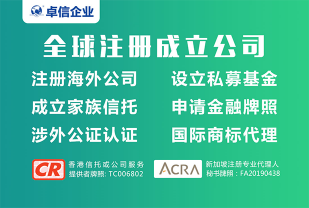Cleaning up messy accounts refers to the process of sorting out, adjusting and correcting the financial records of an enterprise. This is usually because in the course of business operations, the company may have errors, omissions, confusion, etc. in the accounting records due to various reasons such as frequent changes in financial personnel, imperfect financial systems, and chaotic financial management. Cleaning up messy accounts is not simply "balancing numbers", but injecting financial vitality into the company through systematic correction. In the UAE, 67% of small and medium-sized enterprises failed to obtain financing due to chaotic accounts, highlighting the importance of a compliant accounting system to corporate development. Cleaning up messy accounts requires scientific steps: data collection → asset verification → difference adjustment → system reconstruction. Among them, cross-border enterprises need to pay extra attention to the relationship between customs documents, foreign exchange settlement records and tax data.

Under the strict tax supervision and free zone audit framework of the UAE, chaotic financial accounts may lead to multiple risks:
Legal risks: FTA (Federal Tax Authority) audits find discrepancies between accounts and actuals, and face tax fines of 5%-300%;
Operational risks: erroneous financial data leads to investment misjudgments and supply chain funding chain breaks;
Reputation risks: bank credit is blocked and listing plans are stranded.
| Company Type | Typical problem scenarios |
|---|---|
| Start-ups/Small and Micro Enterprises | There is frequent turnover of financial personnel, irregular account settings, and missing income and expenditure records. |
| Enterprises in the rapid expansion stage | The surge in business volume has led to chaotic bill management and cross-border transactions have not matched customs data. |
| Mergers and acquisitions | Historical bad debts and hidden debts are not disclosed, and asset ownership is unclear |
| Tax status conversion company | When the transfer from assessed levy to audited levy is made, the original voucher chain is broken |
| Dealing with audited companies | The VAT declaration data and bank flow deviation exceeds 10%, and the tax audit is faced |
1. Preparation before cleaning: In-depth understanding of the company's financial system, business processes and internal control system; comprehensive collection of financial information, such as account books, vouchers, contracts, current accounts, etc.; carefully analyze the reasons that may cause disordered accounts and identify potential problem points.
2. Cash inventory: Count the cash in stock with the cashier and check it with the accounts. If there is a difference, find out the reason and adjust the account, and use the "Cash Inventory Report" as the original voucher to adjust the journal.
3. Bank deposit verification: Let the cashier print the bank statements of each account, check them one by one, find out the reasons when there is inconsistency, and make the bank account consistent with the statement through the bank deposit balance adjustment table.
4. Inventory: Organize financial and warehouse personnel to count the inventory, check with the detailed account, find out the reasons for the discrepancy between the account and the actual account and adjust them.
5. Fixed asset inventory: Count the fixed assets with the equipment management personnel, check the accounts, create small cards and post them, and fill out the inventory list and comparison table for adjustment after the inventory.
6. Accounts receivable verification: Prepare reconciliation statements based on sales contracts and other documents, which are first checked by sales staff and then sent to customers. If there are any inconsistencies, prepare an inventory list and classify them according to disputes, uncollected items, etc.
7. Accounts payable verification: Ask suppliers to prepare reconciliation statements based on contracts, warehouse entry orders, etc., and the finance department will check them after the purchaser checks them. If there are any differences, find out the reasons, prepare an inventory list and classify them.
8. Tax declaration verification: Check the tax declaration system, compare the tax-related data on the account, find out the reasons for any inconsistencies and make adjustments.
9. Document collection: Collect bank statements, warehouse in and out, material collection, delivery documents, contracts and reports, etc., which are required for financial accounting.
10. Account establishment and account processing: Prepare accounts for those without accounts, and handle accounts based on actual conditions.
Zhuoxin Enterprise has been deeply involved in the UAE finance and taxation field for 10 years, serving more than 500 companies to achieve financial compliance. Zhuoxin Enterprise has the best accountants who have many years of experience in various types of companies. After understanding your business, our experts will give the best solution based on the specific situation of your company.










Zhuoxin Consulting relies on its Chinese service network and Dubai executive team to provide professional one-stop business services without communication barriers for Chinese companies to enter the Middle East market. Its business covers company establishment and maintenance, accounting and taxation, bank account opening, PRO services and business services.
Zhuoxin Consulting has high-quality business resources and maintains close cooperation with many free zones, bankers and tax departments in the UAE to escort your expansion in the Middle East market.
 Add WeChat
Add WeChat